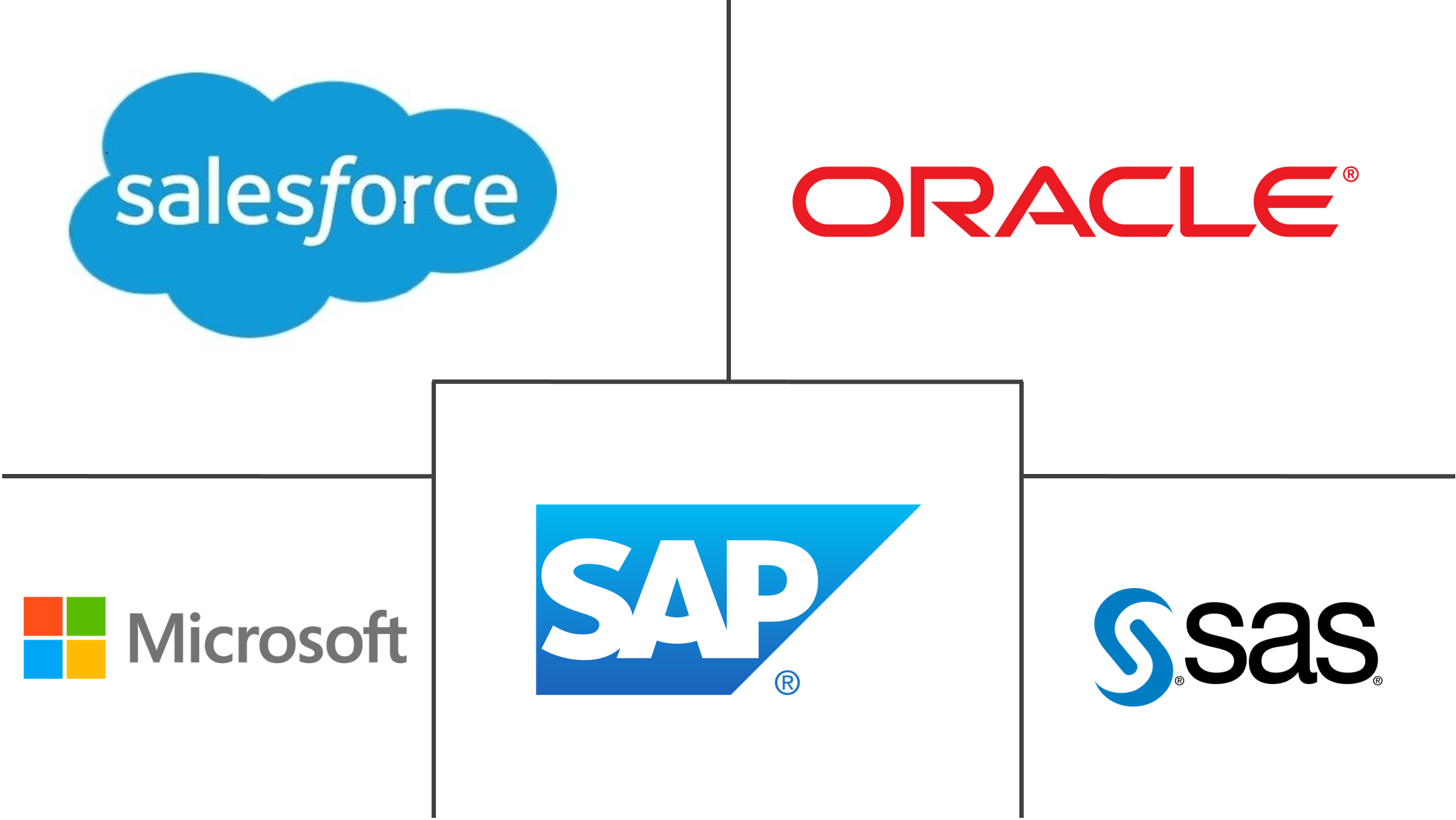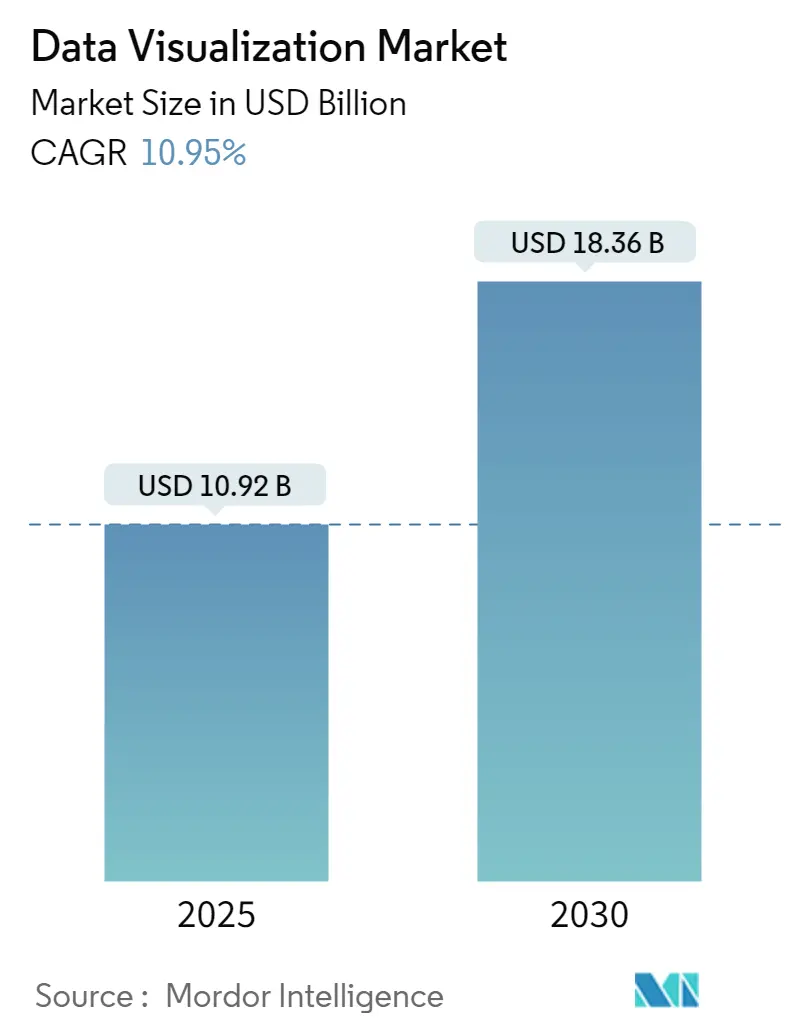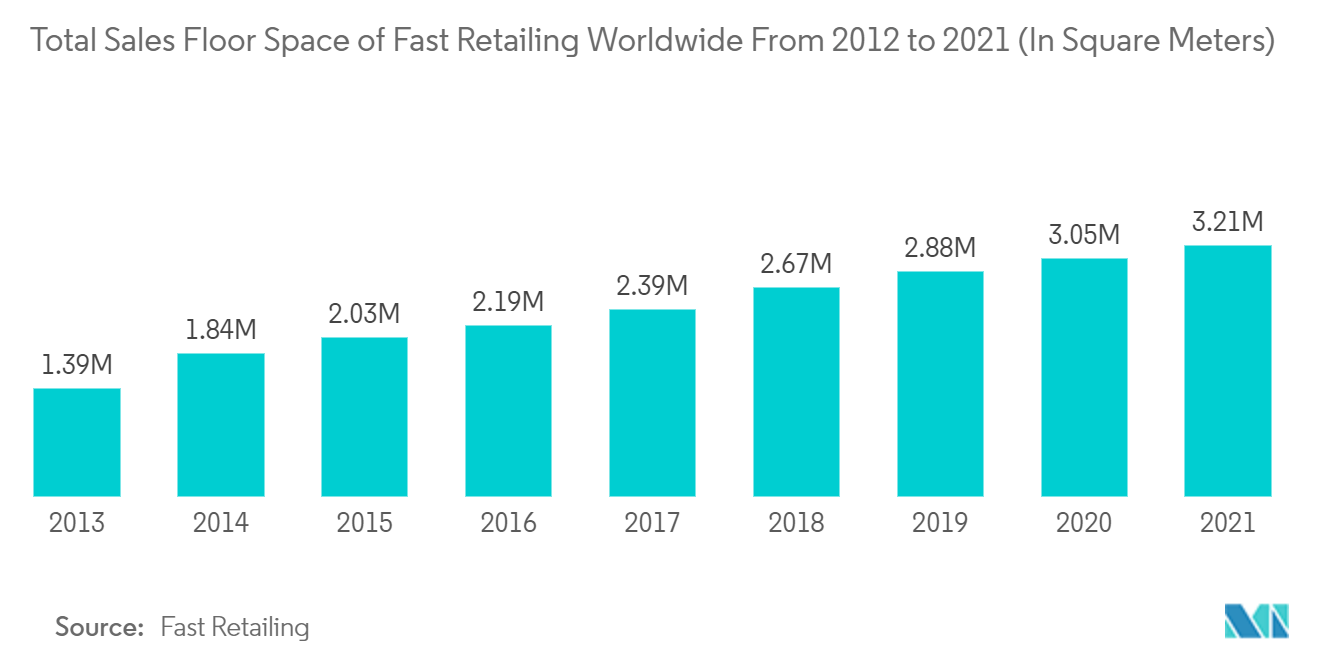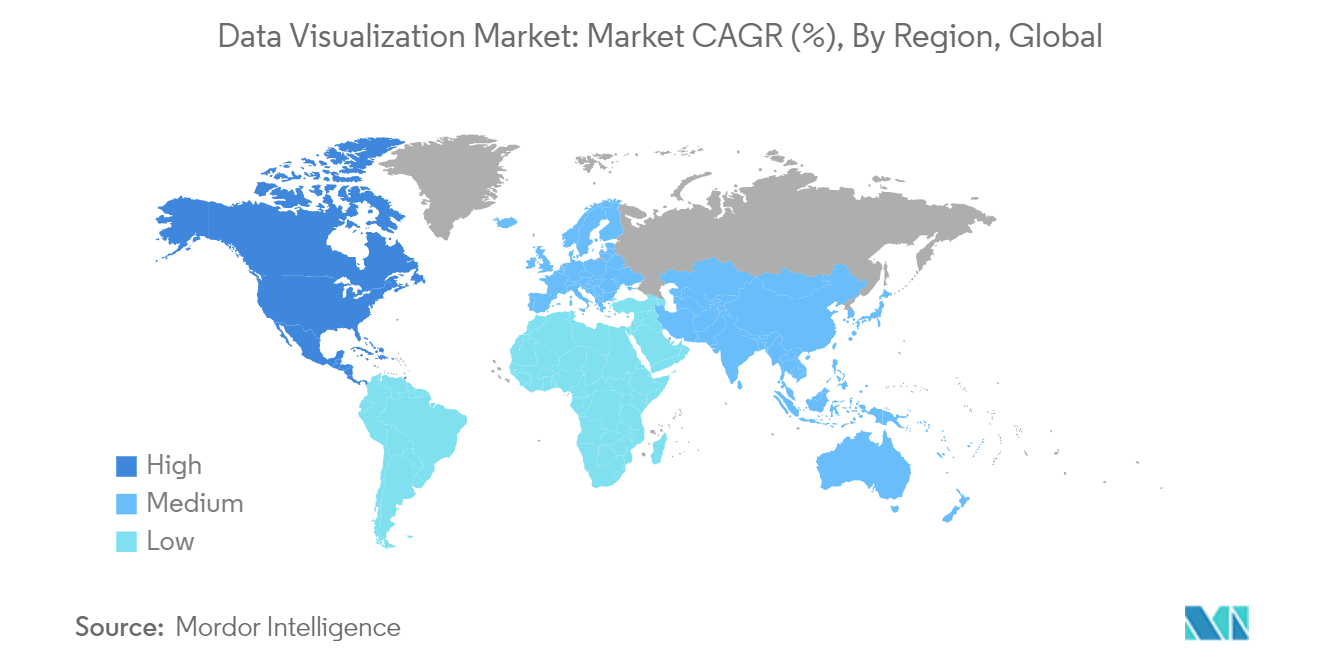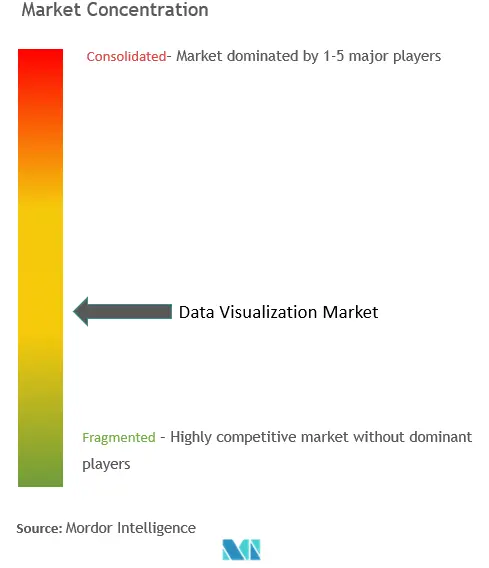Data Visualization Market Analysis
The Data Visualization Market size is estimated at USD 10.92 billion in 2025, and is expected to reach USD 18.36 billion by 2030, at a CAGR of 10.95% during the forecast period (2025-2030).
The emerging nature of data visualization encourages a shift toward analytically driven businesses, where users can explore data in various forms of graphical representation, initially only available in tabular reports.
- Across many industries, businesses are realizing the benefits of data-driven decision-making. Extracting useful information from big, complicated databases is becoming increasingly important. Data visualization is essential for demystifying complex information and presenting it in a visually appealing manner that is simple to comprehend and analyze. As companies look for ways to extract valuable insights from their data, inference implies that the market for data visualization tools will keep growing. Decision-makers may find patterns, trends, and correlations by efficiently visualizing data, which helps them make more well-informed strategic decisions.
- The term "augmented reality" refers to a technology that overlays digital data, such as visualizations, on the physical environment. A new development that has the potential to change the market completely is the incorporation of AR with data visualization tools. AR can give consumers an immersive and engaging experience that enables them to explore and analyze data in novel ways by superimposing data visualizations onto real-world objects or environments. This technology can be used in several fields, including manufacturing, healthcare, and retail, where real-time data visualization in a geographical context can improve judgment, training, and consumer interaction.
- The combination of natural language processing and conversational interfaces is another distinctive market driver for data visualization. NLP enables computers to comprehend, translate, and produce human language, allowing users to communicate with data visualization tools using natural language instructions or queries. Through dialogues with the system, users can ask questions, request certain visualizations, or examine data by utilizing NLP. Due to its lower learning curve than conventional graphical user interfaces, this driver may make data visualization more approachable to a wider audience. Additionally, it creates possibilities for data-driven decision-making via voice-enabled gadgets like smart speakers and virtual assistants.
- Data privacy and security have become major concerns as the volume of data being generated and analyzed continues to increase. Inference suggests that organizations and individuals are becoming more aware of the potential risks associated with data breaches and unauthorized access to sensitive information. This heightened awareness has led to stricter regulations, such as the General Data Protection Regulation (GDPR) in the European Union and the California Consumer Privacy Act (CCPA) in the United States. These regulations impose limitations on how organizations collect, store, and process personal data.
- COVID-19 brought about unprecedented challenges, requiring organizations to focus on crisis management and business continuity. Data visualization played a vital role in helping businesses monitor key metrics, identify potential risks, and develop strategies to mitigate the impact of the pandemic. Visualizations enabled organizations to track supply chain disruptions, analyze customer behavior shifts, and monitor the financial health of their businesses. By visualizing these critical insights, organizations could respond more effectively to the crisis and adapt their operations to ensure business continuity. There has also been an impact of the Russia-Ukraine war on the overall packaging ecosystem.
Data Visualization Market Trends
Retail Segment to Witness Significant Growth
- Data visualization has enabled retailers to gain deeper insights into customer behavior, preferences, and purchasing patterns. By visualizing customer data, retailers can identify trends, understand customer segmentation, and personalize their marketing strategies. Visual representations of data help retailers make data-driven decisions, optimize inventory management, and tailor their product offerings to meet customer demands. This improved customer analytics has resulted in more targeted marketing campaigns, better customer experiences, and increased sales.
- Data visualization plays a crucial role in enhancing supply chain management for retailers. By visualizing supply chain data, including inventory levels, logistics, and order fulfillment, retailers can identify bottlenecks, optimize processes, and improve overall efficiency. Real-time visualization of supply chain data enables retailers to track inventory movement, monitor product availability, and identify potential disruptions. This leads to improved inventory management, reduced stockouts, and better forecasting accuracy.
- With the help of data visualization tools, retailers can monitor sales performance in real time. Through interactive dashboards, they can track key performance indicators (KPIs), such as sales revenue, conversion rates, and average transaction value. Real-time visualization of sales data enables retailers to identify sales trends, make timely adjustments to pricing and promotions, and address issues or opportunities as they arise. This helps retailers stay agile and responsive in a competitive market, improving sales performance.
- Data visualization empowers retailers to create personalized customer experiences by understanding individual preferences and behavior. Retailers can deliver targeted recommendations, personalized offers, and customized marketing campaigns by visualizing customer data, such as purchase history, browsing patterns, and demographic information. Data-driven personalization enhances customer satisfaction, increases loyalty, and drives repeat purchases.
North America to Hold Largest Market Share
- North America is a prominent market owing to the growing adoption of advanced technologies by end-user industries across the region. Moreover, the area has a strong foothold of vendors, contributing to the market's growth. Data visualization applications in North America are driven by factors such as growth in big data and the need for analytics in the retail sector.
- The United States data visualization market is witnessing healthy growth due to the increasing amount of data generated in small- and medium-scale firms. For instance, a massive amount of data is being developed on digital information platforms every day. According to IBM Corporation, 2.5 quintillion bytes of data are generated daily.
- In July 2021, the United States Coast Guard adopted COVID-19 data visualization tools to assist commanders in making informed decisions on everything from vaccine distribution to operational readiness and has taken precautions to guarantee that the new technologies do not compromise guardsmen's privacy and security. The program aims to teach situational awareness and perspective, and it should not directly impact individuals.
- The implementation of data-driven decision-making is also rising in Canadian markets across various sectors. Cloud business management solutions vendor Sage launched its cloud-first Sage Data and Analytics service integration for Sage 300 and Sage 100 in the US and Canadian markets in March 2021. Its business intelligence toolkit can provide users with live sales dashboards and detailed P&L reports with the help of AI and machine learning algorithms. Such innovations are expected to drive the studied market.
- An increasing need to track data from various sources and compile it into different data representations to make critical business decisions can be observed in North America, as this region is a significant market for technology-based solutions.
Data Visualization Industry Overview
The data visualization market is moderately competitive. The players in the market are innovating in providing strategic solutions to increase their market presence and customer base. This enables them to secure new contracts and tap new markets.
- April 2023 - Amovos SRO, an Atlassian Marketplace Partner that simplifies Jira and Confluence with its well-known Custom Charts for Jira and Custom Charts for Confluence apps, had agreed to be acquired by Tempo Software, a leading provider of portfolio management solutions for product development organizations. With Jira data visualizations that are simple to use and customizable thanks to the purchase, Tempo's Atlassian-based product suite will grow, allowing teams to concentrate on finishing tasks swiftly rather than fumbling with cumbersome corporate reporting tools.
- September 2022: To make Grafana natively compatible with the Azure cloud platform, Microsoft and Grafana Labs established a strategic agreement. Azure Monitor and Azure Data Explorer are just two cloud services that Microsoft's new Azure Managed Grafana service offers native connections. Version 9.0 of Microsoft's Azure Managed Grafana includes a better alerting feature to inform IT administrators of potential technical difficulties. Zone redundancy and support for an API key are also included in this edition.
Data Visualization Market Leaders
-
Salesforce.com Inc.
-
Microsoft Corporation
-
SAP SE
-
SAS Institute Inc.
-
Oracle Corporation
- *Disclaimer: Major Players sorted in no particular order
Data Visualization Market News
- September 2022: KPI 360, an AI-driven solution that uses real-time data monitoring and prediction to assist manufacturing organizations in seeing various operational data sources through a single, comprehensive industrial intelligence dashboard that sets up in hours, was recently unveiled by SymphonyAI Industrial.
- January 2022: The most recent version of the IVAAP platform for ubiquitous subsurface visualization and analytics applications was released by INT, a top supplier of data visualization software. IVAAP allows exploring, visualizing, and computing energy data by providing full OSDU Data Platform compatibility. With the new edition, IVAAP's map-based search, data discovery, and data selection are expanded to include 3D seismic volume intersection, 2D seismic overlays, reservoir, and base map widgets for cloud-based visualization of all forms of energy data.
Data Visualization Industry Segmentation
Data visualization represents a wide range of business applications. Visualizing data is a concept used in different terms and technologies, including dashboards, infographics, scorecards, analytics, big data, and business intelligence. Data Visualization helps extract a meaningful report from the diverse and rapidly increasing volumes of business data. Many users believe that using big data for data visualization helps better decision-making.
The data visualization market is segmented into by organization department (executive management, marketing, operations, finance, sales), deployment mode (on-premise, cloud/on-demand), end user (BFSI, IT and telecommunication, education, manufacturing, government, retail/e-commerce) and geography (North America, Europe, Asia-Pacific, Latin America, and Middle East & Africa). The report offers market forecasts and size in value (USD) for all the above segments.
| Organizational Department | Executive Management |
| Marketing | |
| Operations | |
| Finance | |
| Sales | |
| Other Organizational Departments | |
| Deployment Mode | On-premise |
| Cloud/On-demand | |
| End User | BFSI |
| IT and Telecommunication | |
| Retail/E-commerce | |
| Education | |
| Manufacturing | |
| Government | |
| Other End Users | |
| Geography | North America |
| Europe | |
| Asia-Pacific | |
| Latin America | |
| Middle East and Africa |
Data Visualization Market Research FAQs
How big is the Data Visualization Market?
The Data Visualization Market size is expected to reach USD 10.92 billion in 2025 and grow at a CAGR of 10.95% to reach USD 18.36 billion by 2030.
What is the current Data Visualization Market size?
In 2025, the Data Visualization Market size is expected to reach USD 10.92 billion.
Who are the key players in Data Visualization Market?
Salesforce.com Inc., Microsoft Corporation, SAP SE, SAS Institute Inc. and Oracle Corporation are the major companies operating in the Data Visualization Market.
Which is the fastest growing region in Data Visualization Market?
Asia Pacific is estimated to grow at the highest CAGR over the forecast period (2025-2030).
Which region has the biggest share in Data Visualization Market?
In 2025, the North America accounts for the largest market share in Data Visualization Market.
What years does this Data Visualization Market cover, and what was the market size in 2024?
In 2024, the Data Visualization Market size was estimated at USD 9.72 billion. The report covers the Data Visualization Market historical market size for years: 2019, 2020, 2021, 2022, 2023 and 2024. The report also forecasts the Data Visualization Market size for years: 2025, 2026, 2027, 2028, 2029 and 2030.
Our Best Selling Reports
Data Visualization Tools Industry Report
Statistics for the 2025 Data Visualization market share, size and revenue growth rate, created by Mordor Intelligence™ Industry Reports. Data Visualization analysis includes a market forecast outlook for 2025 to 2030 and historical overview. Get a sample of this industry analysis as a free report PDF download.

